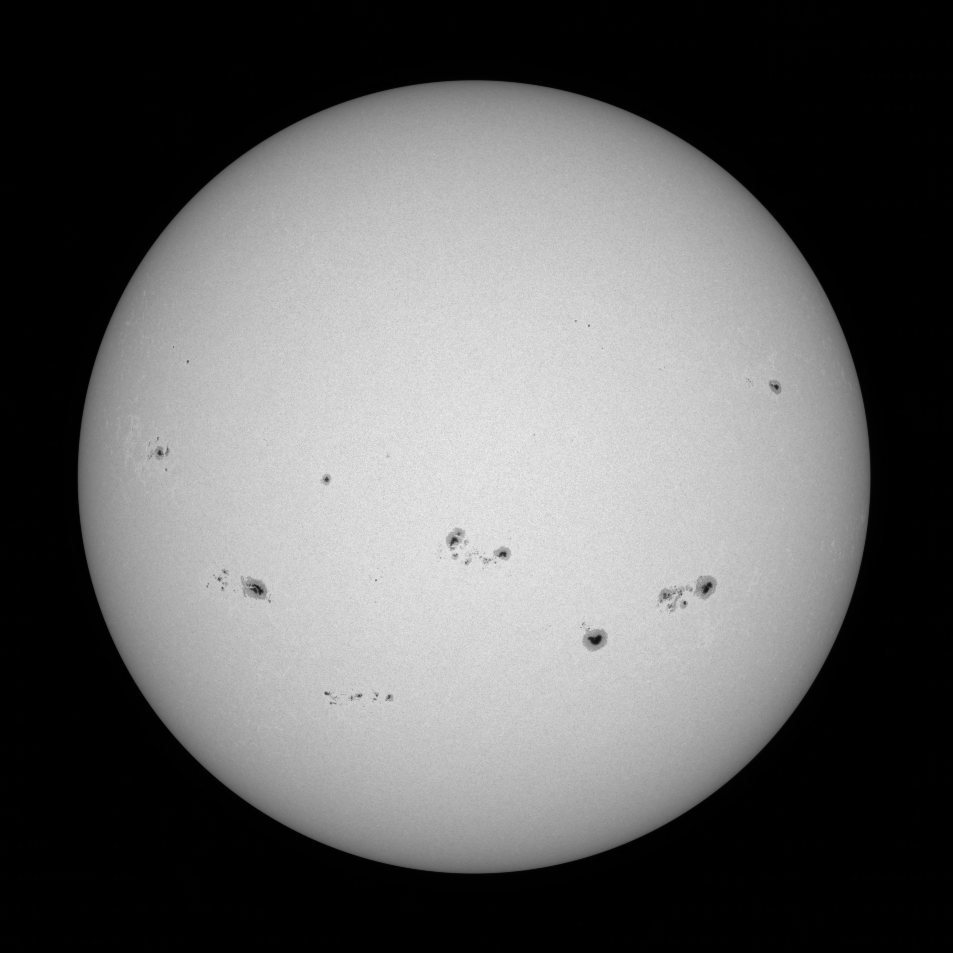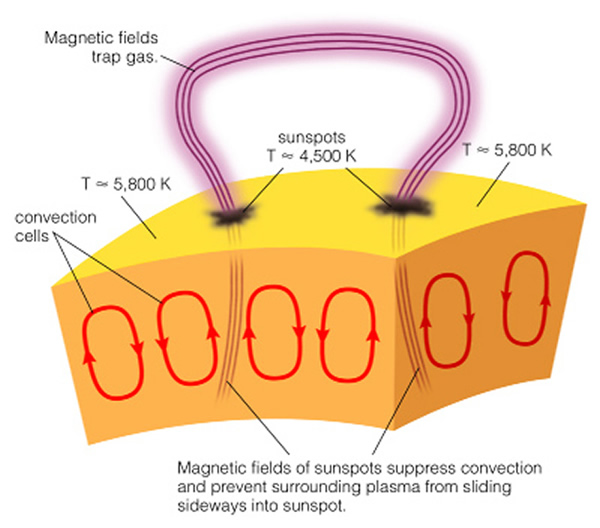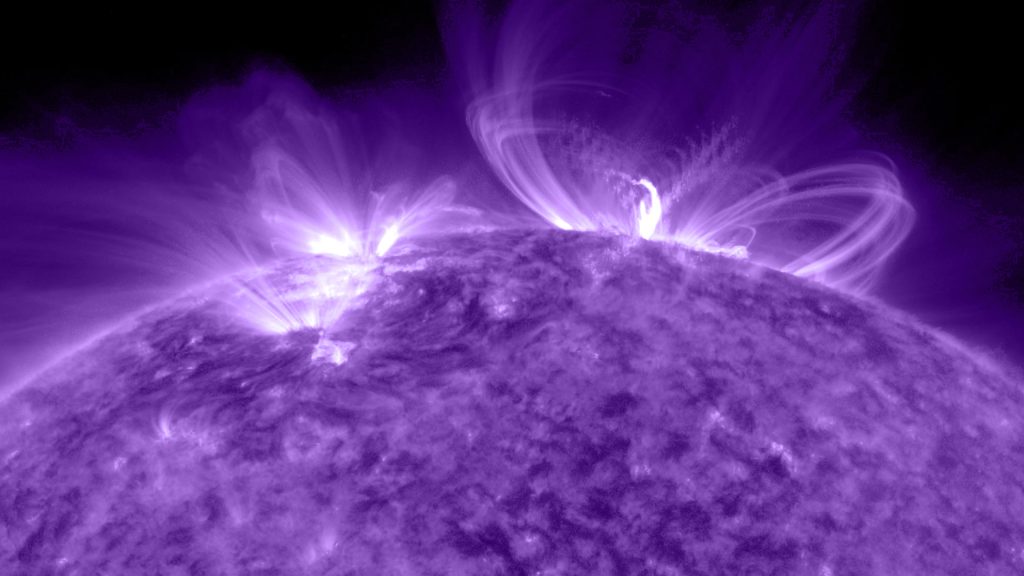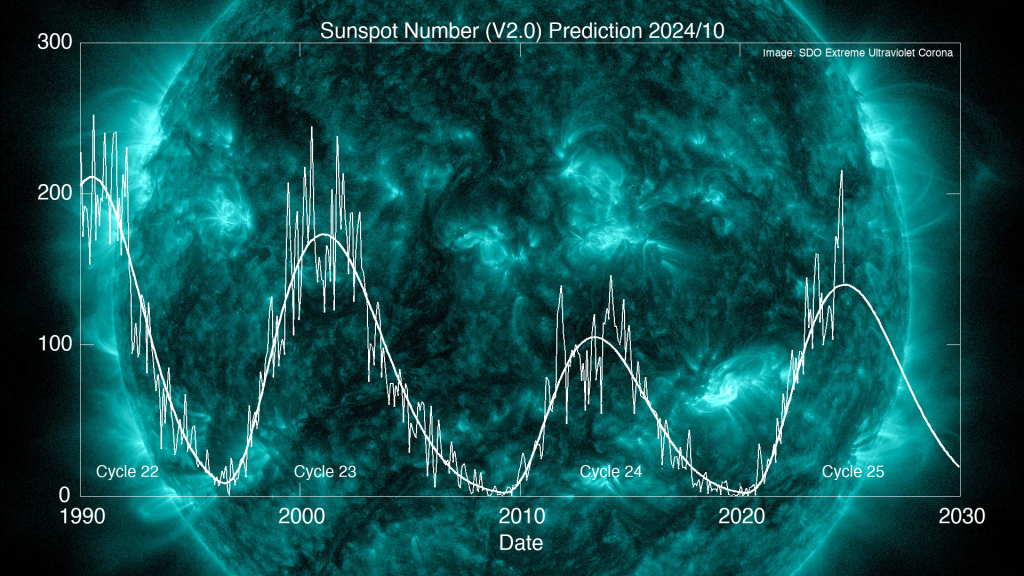Solar Maximum
Dark spots on the Sun were noticed thousands of years ago by Chinese astronomers who may have used thin slices of jade to observe the Sun safely. About 400 years ago, astronomers in Europe began using telescopes to observe the Sun using projection, and they also saw these dark spots. Ever since, astronomers have been carefully watching the Sun and noticing that the number of sunspots changes over time.
Individual sunspots come and go, lasting days to weeks. If you count the number of sunspots you can see every day, or every week, or every year a pattern starts to emerge. From year to year the number of sunspots may rise or fall. There are years where there are almost no sunspots at all, and then maybe four or five years later the number of sunspots becomes very large. In the past 400 years we have seen that every 11 years there is a maximum number of sunspots, called Solar Maximum. We call the rise and fall of sunspot numbers every 11 years the Solar Cycle.
Active Regions
The churning of hot plasma beneath the surface of the Sun generates strong magnetic fields. As the Sun spins, it twists the magnetic fields, forming loops that rise up through the photosphere. The strong magnetic fields in these so-called active regions cause the material inside to become just a bit cooler (around 4500 K) than the surrounding gas (5800 K) making it appear darker by contrast. Sunspots are the footprints of these magnetic field loops.
In the atmosphere of the Sun, called the corona, the magnetic fields above active regions trap plasma, which is so hot that it glows in ultraviolet light.
Activities




